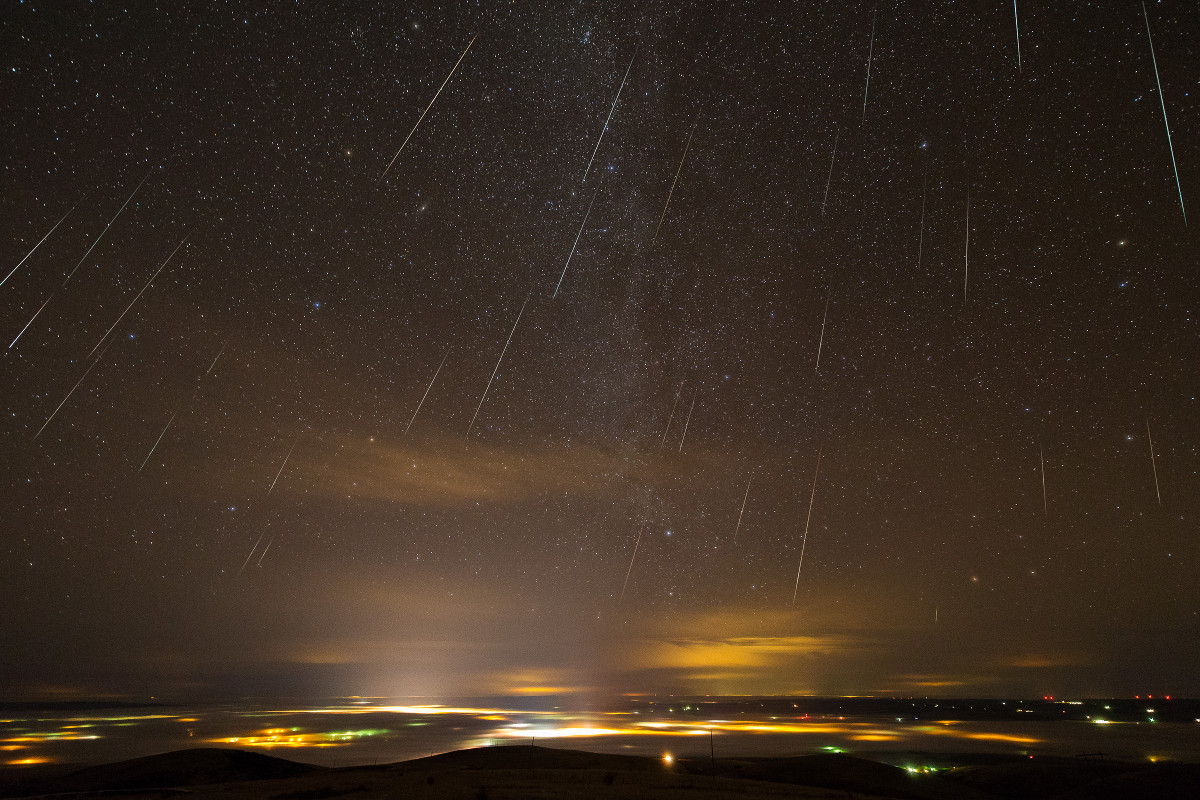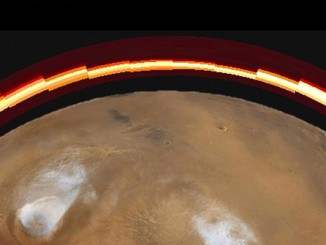
In good conditions the Geminids regularly produce 80 meteors per hour (ZHR 100+) with the radiant, which lies a few degrees north of Castor, highest in the south (67 degrees) at 1 am. The radiant is up all night and morning twilight won’t start to interfere until around 6:30 am (London), so the peak of the shower can be enjoyed as long as you can keep the Moon to your back or hidden behind a building. Astronomy Now’s Peter Grego reckons it is not unreasonable to expect to see half a dozen nice events in 30 minutes of watching close to the maximum. Even under moderately light polluted skies, the brightest Geminids should punch through the orange glow.

Geminids are relatively slow meteors entering the upper atmosphere at speeds of 35 kilometres/second and there are a large proportion of bright, colourful events. The meteoroid stream has spawned from an asteroid — sungrazing (3200) Phaethon — rather than a comet and this seems to make the debris more solid or robust and can survive for longer before burning up. Recent images has actually shown a comet-like tail to Phaethon so it’s more appropriate perhaps to term it a ‘rock comet’.
The Moon severely marred last year’s show but this year prospects are significantly better. The Moon is at Last Quarter and on the night of 13/14th December will be above the horizon from midnight onwards, lying in that thin strip of Leo territory between Sextans and Virgo, a good 60 degrees away from the radiant.
As with observing any meteor shower the best advice is not to stare at the actual radiant but at an altitude of 50 degrees (about the same altitude of the Pole Star from the UK) and 30-40 degrees to one side of shower radiant (the width of a fist held at arm’s length is about ten degrees). Recent nights have been bone-chilling so be well prepared, especially if you are travelling to a dark site to make your watch. Wrap up well in layers of warm, dry clothing and keeping hands, feet and head warm is essential! Many people just prefer to observe for fun but if you would like to ‘do some science’, then check out the advice on the British Astronomical Association’s website.
Inside the magazine
You can read more about the Geminid meteor shower in the December issue of Astronomy Now as part of our complete guide to the night sky. Never miss an issue by subscribing to the UK’s longest running astronomy magazine.




